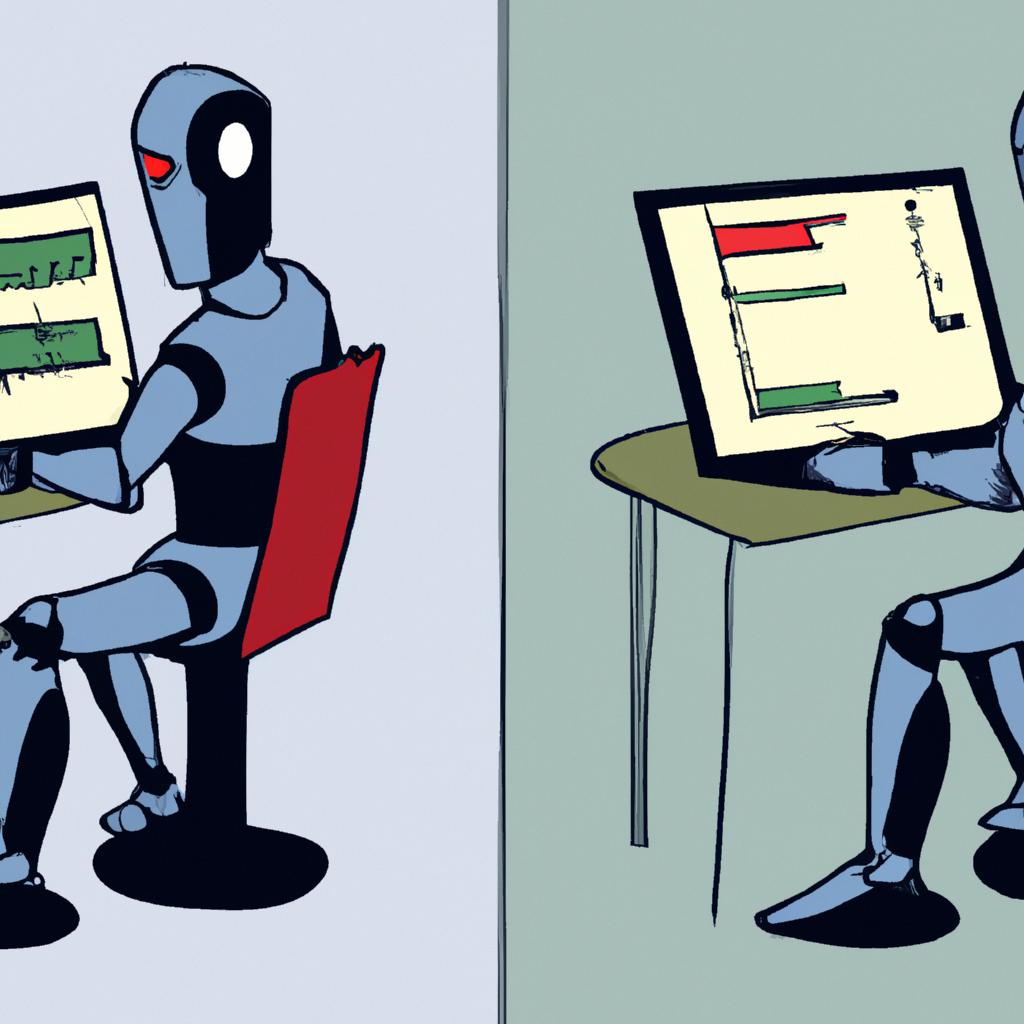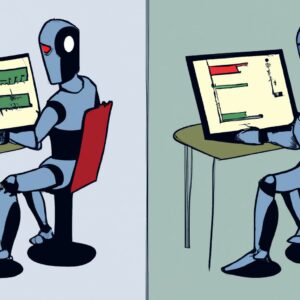GPT-4 vs. ChatGPT – Exploring the Difference
GPT-4 vs. ChatGPT: two of the pioneers of GPT technology, which has significantly boosted interest in generative AI and artificial intelligence as a whole. GPT stands for Generative Pre-trained Transformer, a form of advanced artificial intelligence that works by using a neural network machine learning model trained on a massive trove of data derived from the internet. Advanced AI chatbots have AI models that generate text responses that mimic real-time conversations, write documents, and solve problems.
GPT-4 and ChatGPT have both been praised for being excellent AI-based tools. Basic similarities exist between them – GPT-4 is a more advanced version of ChatGPT, which is based on GPT-3.5, resulting in GPT-4 surpassing ChatGPT in every way.
GPT-4 vs. ChatGPT – Text-Based Queries
ChatGPT and GPT-4 are both AI-powered generative language models created by OpenAI. They were trained on a massive quantity of text obtained from the web to generate text responses that sound human-like when provided with a prompt. Both are constructed using a deep learning architecture called the Transformer, which makes them adept at recognizing language patterns and generating texts that are consistent and sound natural. GPT-4 can access newer data with more AI sources and a greater number of parameters, leading to its responses being more reliable than ChatGPT’s.
GPT-4 vs. ChatGPT – Chatbot Applications
ChatGPT is a highly acclaimed chatbot application for use in automating customer service, answering FAQs, and conversing with users. This AI-powered chatbot takes advantage of machine learning to respond conversationally, and performs far better than the primitive chatbots that are often used nowadays on websites. GPT-4 can also achieve this but with the extra bonus of drawing upon an extensive collection of online texts, articles, novels, and websites.
Both GPT-4 and ChatGPT are suitable for this job however GPT-4 excels when it comes to inquiries related to shipping schedules, product reviews, product returns, and product and service availability and options.
GPT-4 vs. ChatGPT – Marketing & Sales Support
GPT-4 and ChatGPT can effectively gather information, understand online behaviour, and recommend products as part of the online sales process. Both have automation features that extend to appointment scheduling, reservations, and payment processing.
Image Interpretation
Image interpretation is an area where GPT-4 really outperforms ChatGPT. GPT-4 is a more capable multimodal language AI model than ChatGPT, and it can interpret images very well. It can build websites based on sketches, and recommend recipes by looking at a single photo.
Number of Parameters Analyzed
ChatGPT works on more than 100 million parameters up to a maximum of 6 billion parameters to generate real-time answers. On the other hand, GPT-4 is speculated to work with as much as 100 trillion parameters, although OpenAI has not confirmed the exact number. It is suggested to be in the range of 1 trillion to 10 trillion.
Dealing with Current Data
Both GPT-4 and ChatGPT are limited when it comes to the fact that they are based on data that may be outdated. GPT-4 has access to slightly more recent information than ChatGPT, although both are still prone to errors due to recent changes.
ChatGPT has had a few trouble-making responses and even incorrect answers. Fortunately, GPT-4 is much more accurate than ChatGPT. OpenAI reports that GPT-4 has an 82% chance of not responding to content that OpenAI does not approve of, and a 60% chance of not inventing off-the-cuff replies. Keep in mind, though, that the chatbot is not perfect.
Plagiarism Detection
ChatGPT includes AI Text Classifier, a plagiarism checker, which is capable of recognizing possible cases of plagiarism. However, these results are not to be taken at face value as it may make mistakes. OpenAI recommends that after ChatGPT spots potential candidates, a human should review the data to make the final call.
Meanwhile, GPT-4 spots plagiarism examples with more certainty (though it is far from 100%). It also does a better job at distinguishing between AI-written and human-written text, and in the detection of automated misinformation campaigns that take advantage of AI tools. Users are warned, however, that the general limitations of both include a higher likelihood of inaccuracy with texts below 1,000 characters and that plagiarism results are better with English than other languages.
GPT-4 is said to be able to produce text that can maintain the same style and grammar as an original piece of material. This might be useful for consistency in social media posts and email marketing, but it is unlikely to work effectively when it comes to creative writing or poetry. Additionally, both GPT-4 and ChatGPT can summarize long texts, articles, and reports to reflect key concepts with a certain degree of accuracy, as well as highlighting essential passages within a given text. But GPT-4 is more reliable in producing these results.
The greater the complexity of the task, the more GPT-4 reveals its superiority over ChatGPT. Above a particular threshold, the reliability and creativity of GPT-4 compared to ChatGPT becomes more and more discernible. For example, GPT-4 is more adept at basic computer programming, drawing up simple contracts, designing elementary computer games, and taking exams. In the Biology Olympiad test, for instance, it scored in the 99th percentile (ChatGPT only achieved the 31st percentile).
ChatGPT has advanced the automated translation of English into other languages immensely. Still, GPT-4 goes a step further. In a comparison of 26 languages, it scored higher in accuracy than ChatGPT in 24 of them.
Cost & Technology
ChatGPT has a basic version available for free and the main ChatGPT Plus version costs $20/month. Subscribers gain access to ChatGPT during peak times, faster responses, and first dibs on new features and improvements. GPT-4 is only available by subscription. Its pricing structure is a bit complicated. Pricing is based per 1,000 tokens (chunks of words). 1,000 tokens amounts to roughly 750 words of material. Prices range from 3 cents to 6 cents per 1,000 tokens for prompts, and an additional 6 to 12 cents per thousand once finished. The higher rate grants access to an expanded set of contextual data.
ChatGPT and GPT-4 both use a transformer-based architecture as part of a neural network that manages sequential data. ChatGPT uses GPT-3.5 so it is less advanced, has a limited number of potential parameters included, and its material may be a bit outdated . Therefore, it is less precise and lags far behind GPT-4 in results, especially when the complexity of the problem or challenge increases. ChatGPT performs well in chatbots, translating languages, and answering simple questions, but GPT-4 is smarter, capable of understanding images, and dealing with eight times as many words as its predecessor. Reporters will without doubt continue to be able to fool both in various ways, but GPT-4 is much less prone to mistakes and false statements. It can even explain why jokes are humorous, thus users are recommended to go straight to GPT-4 as it contains all the features found in ChatGPT ( built on GPT-3.5) as well as far more.
comments: 0


